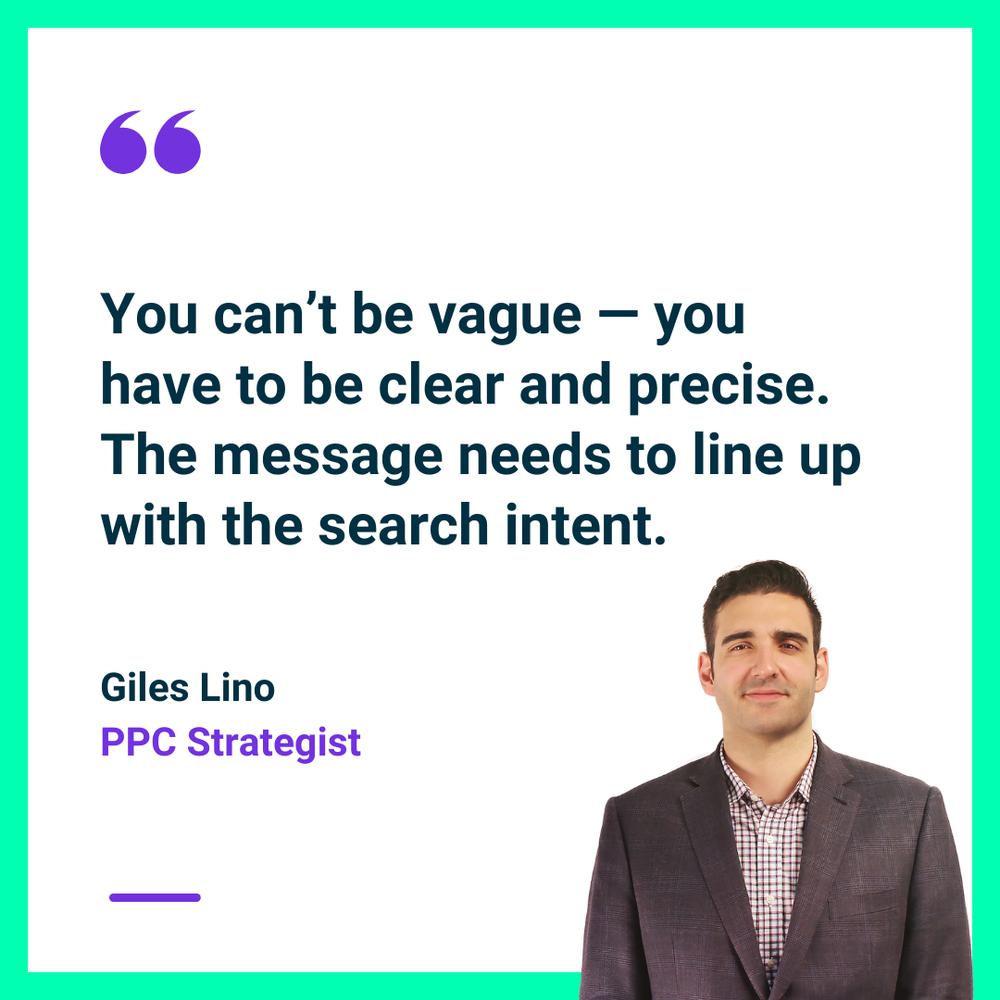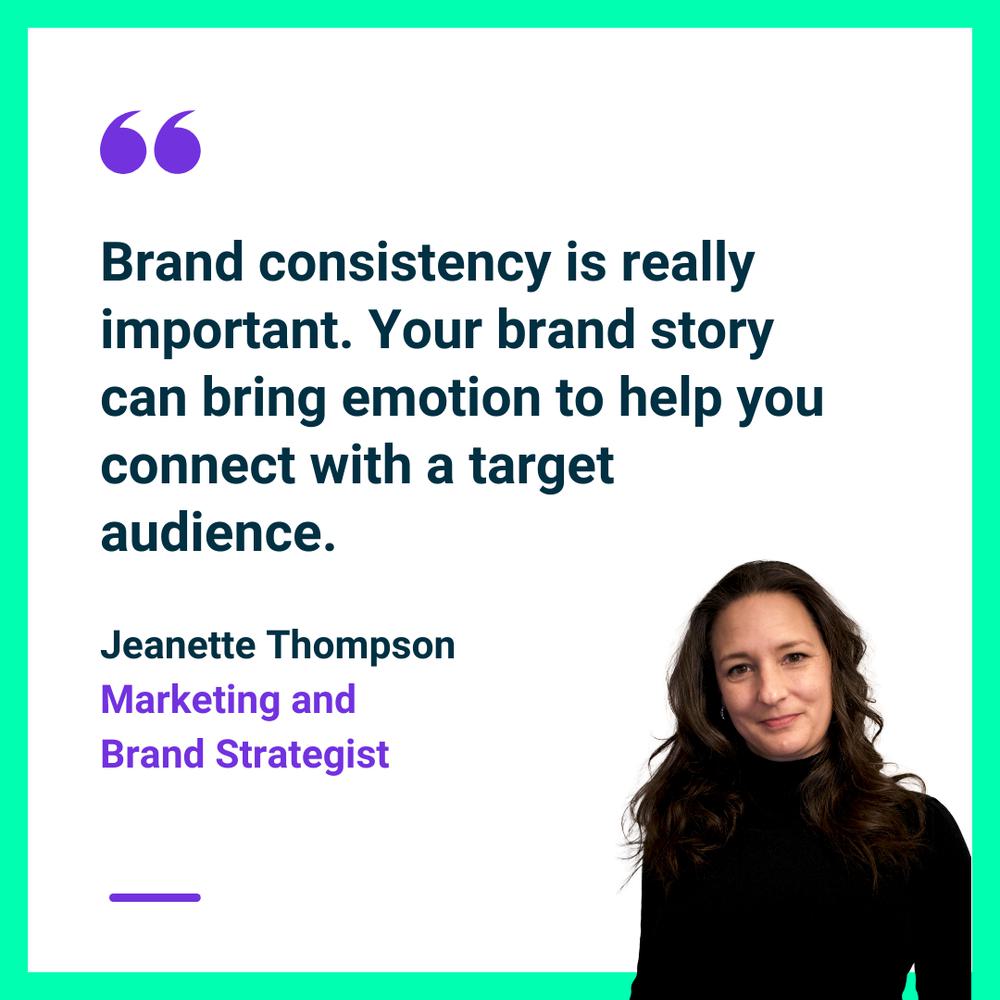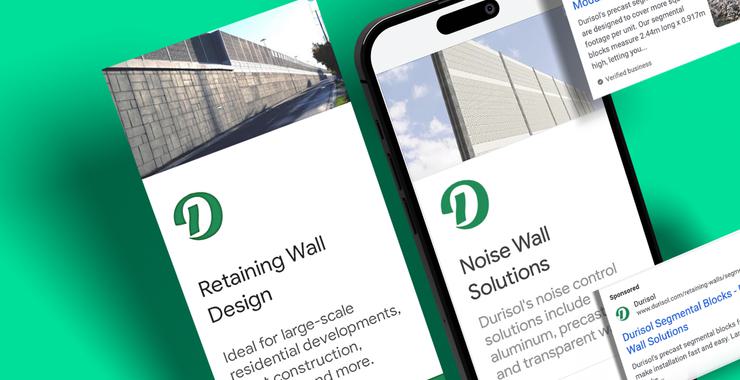Make B2B ads that don’t waste time
Each advertisement gets a few seconds of a buyer’s time and attention span. To make the most of each moment, target ads to a relevant audience and optimize content to communicate value.

B2C advertisements are often touted as being bolder, more creative, or more emotionally resonant when compared to B2B. We could argue this point, but B2B ads have an important edge over their consumer-focused counterparts: buyers actually want to see them.
Ads can be an important piece in the buying decision puzzle, offering a condensed view of a product buyers need to do their jobs, a service that would help them find new efficiencies, or a brand they would enjoy working with.
But they don’t have all day. Buyers are busy, so ads need to reach the correct audience, stand out visually, and communicate value in just a few seconds. It sounds straightforward, but there are several layers to getting it right.
Is boredom the issue?
The word “boring” gets thrown around a lot in the B2B vs. B2C conversation, but it’s misleading. It implies the real goal is to make your ad look “fun” when the real concern is value. It’s certainly possible to make a fun B2B ad, but if it has nothing relevant to say, it’s not going to result in a sale.
As a marketer, you need to make the most out of the few seconds of attention you get from each viewer. To that end, your ad should address a common pain point your audience experiences at work and communicate the unique selling proposition of your product, all while staying consistent with your brand identity.
Here’s the tricky part: you can’t say everything at once. Most ads have limited space for text and visuals, if it has visuals at all. That’s why specificity is key.

Narrow down your targets
From a B2B perspective, you want to start by tailoring ads to the intended viewer. A spray-and-pray approach won’t cut it and your targeting parameters make all the difference in reaching your intended audience.
“When you’re focused on a niche audience, you have to be more nuanced, because people are searching for a business purpose, not a personal purpose,” says Giles Lino, PPC Strategist at Motum B2B. “Understanding your audience becomes a core component to the advertising.”
Examples of general targeting parameters on a platform like LinkedIn can include location, job title, and business attributes (e.g., number of employees and annual revenue). To go deeper, you can build audience profiles around common pain points and the challenges they experience, the types of content and channels they prefer, and their values or priorities when it comes to seeking out new solutions.
Don’t bore us, get to the chorus
There’s a lot of information to parse before you even start creating your B2B ad, and most of the time, it all needs to be distilled into a tiny rectangle on someone’s screen. Text-based ads in search have a limited character count and banner display ads are mostly visual with minimal space for text. Every size and format in between needs to juggle its visual language with its textual message.
Whether you get three words, 30 characters, or 300 pixels, the ad needs to be direct.
“You can’t be vague — you have to be clear and precise. The message needs to line up with the search intent,” Lino explains. “In an effort to find new customers or retarget, the ad has to speak to them as if they’re in an active mindset to be shopping for something.”
Whether it’s exceptional customer service, a product with special functionality, or sheer brand recognition, you have a unique selling proposition. The economy of your B2B ad space is best spent on words and visuals that clearly communicate it.

The balancing act
When you’re thinking about how to be distinctive, the interplay of words and visuals is pivotal.
If your image is communicating something, you should think about strengthening that message through text without being redundant. Let’s say you have a product that helps manufacturers in the candy industry. You can show an image of candy next to the product without having to also write, “We proudly serve the candy-making industry.”
Instead, maybe you can say, “We keep you out of sticky situations.” A bit cliché, but let’s pretend that candy getting stuck to the equipment is the audience’s pain point. Viewers will connect the text to the visuals intuitively.
“It’s a balance between the amount of information and the visual ability to digest that information,” explains Jeanette Thompson, Marketing and Brand Strategist at Motum B2B. A common mistake in B2B is to write a wall of text filled with technical information. That can be jarring to a viewer, which is why ads need a sense of flow and balance in the design.
She adds that some of the more memorable examples of B2B ads we’ve seen have “a high-quality image that represents the product well.”
“They make the product look really impressive. They have the right amount of text in a digestive, designed way that helps the viewer understand what the product can do for their business.”
When you need more space to get into the nitty-gritty of a product or service, consider investing in an advertorial or full-page spread in an industry publication. This lets you serve up the juicy technical information that some of your readers might be craving while also building more trust in your brand.
Brand consistency
The visual elements of your brand are also a part of your ad’s language. Your ad may change, but your branding is the thread that ties everything together.
“Brand consistency is really important. Your brand story can bring emotion to help you connect with a target audience,” Thompson says. “Be diligent with making sure everything that gets generated is on brand.”
Over time, strong and consistent branding can build recognition and trust in your audience, making them more likely to click on your ad the next time they need something you have on offer. That means making sure each ad aligns with your brand guidelines — fonts, colour palette, and rules for logo usage bring cohesion to your brand’s visual identity.
Keep coming back to it
Work on your B2B advertisement doesn’t end once it’s published. Lino describes it as a process of continuously iterating, testing, adapting, and reiterating to ensure every aspect of the ad lands with its target audience.
“A/B testing is a tried-and-true method for incremental growth,” he explains. “It can really help improve growth over a period of time and you can learn what resonates with your audience, whether it’s ad copy or visuals.”
There’s plenty of data to dig into, depending on your business objectives and your marketing strategy, and it helps to compare and contrast different metrics to gain a full understanding of what works and what doesn’t.
“Every metric is important, but your conversion rate, total number of conversions, and return on ad spend are really important metrics to get a good grasp on, because they ultimately tell you the success of your campaigns,” Lino says.
One important metric is Google’s Quality Score, which rates the quality and relevance of your ads, keywords, and landing pages. That’s why your ad’s destination is just as essential as its contents — you should always make sure it’s sending users to a landing page experience that aligns with the search intent and keywords you’ve identified. If there’s a disconnect, your Quality Score can drop, leading to a dip in ad performance.
The advertisement itself needs to be focused and on-point, but what happens before and after users see your ad is just as important.
With so many components to making a successful B2B ad, it’s worth working with an agency that takes a holistic approach to ad development.
Get ongoing support for your B2B ad efforts
Our B2B advertising experts are well-versed in every stage of the ad creation process, including strategy, creative design, focused copy, and testing and iteration. Call us for help developing ads that harmonize with your overall marketing goals.
